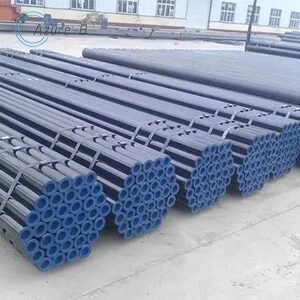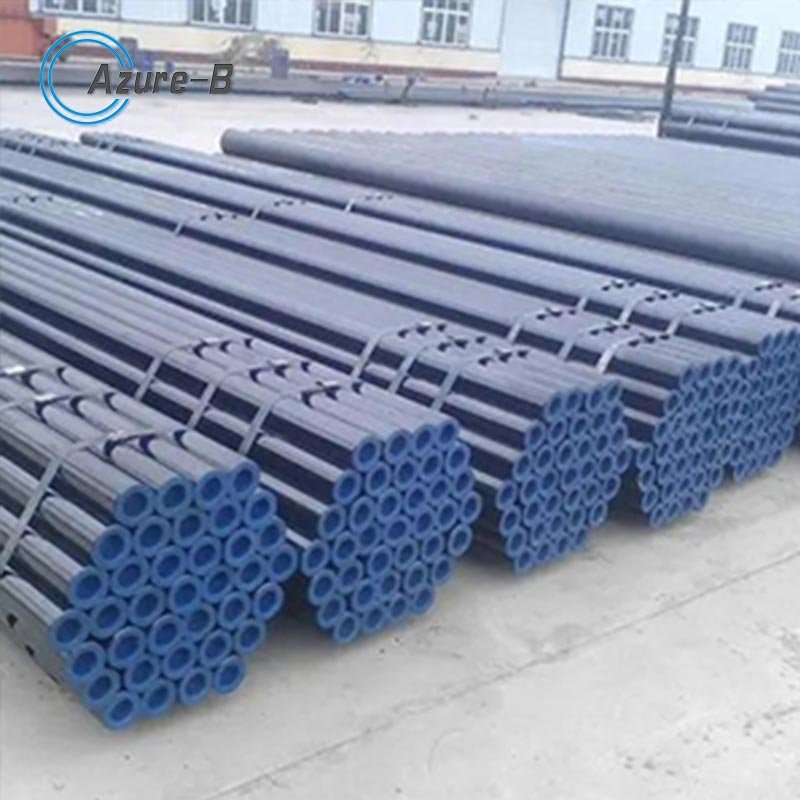Seamless Carbon Steel Pipe
| Grade | SCr420TK, SCM415TK, SCM418TK, SCM420TK, SCM430TK, SCM435TK, SCM440TK |
|---|---|
| OD | 38 – 426mm |
| WT | 5 – 60mm |
| Length | 3000-12000mm |
| Application | used for machinery, automobiles, and other machine parts. |
| Equivalent standards | ASTM A519, EN 10297-1 |
Description
Seamless Carbon Steel Pipe
Seamless Carbon Steel Pipe

Seamless carbon steel pipe is made of steel ingot or solid tube blank, which is perforated and then hot rolled, cold rolled or cold drawn. Seamless carbon steel pipe plays an important role in China’s steel pipe industry.
Totten Tubes offers a range of in stock carbon steel pipe to meet your application needs, including hard-to-find and custom sizes.
Seamless carbon steel pipe is made of steel ingot or solid pipe blank, which is perforated into capillary, and then hot rolled, cold rolled or cold drawn. Seamless carbon steel pipe plays an important role in China’s steel pipe industry. According to incomplete statistics, China now has more than 240 seamless carbon steel pipe manufacturers, more than 250 seamless carbon steel pipe units, and an annual production capacity of more than 4.5 million tons. From the caliber< φ 76%, accounting for 35%< φ 159-650, accounting for 25%. In terms of varieties, 1.9 million tons of general-purpose pipes, accounting for 54%; 760000 tons of oil pipes, accounting for 5.7%; 150000 tons of hydraulic props and precision pipes, accounting for 4.3%; Stainless steel pipe, bearing pipe and automobile pipe totaled 50000 tons, accounting for 1.4%.
The raw material of seamless carbon steel pipe is round tube blank. The round tube blank needs to be cut and processed by a cutting machine with a length of about 1 meter, and then sent to the furnace for heating by a conveyor belt. The billet is sent into the furnace for heating, and the temperature is about 1200 ℃. The fuel is hydrogen or acetylene. The furnace temperature control is a key issue. After the round tube blank is discharged from the furnace, it shall pass through the pressure piercing machine. Generally, the more common piercer is the conical roller piercer. This kind of piercer has high production efficiency, good product quality, large perforation expansion capacity, and can pierce a variety of steel grades. After piercing, the round tube blank is successively cross-rolled, continuous rolled or extruded by three rollers. After extrusion, the pipe shall be removed for sizing. The sizing machine rotates the conical drill bit into the steel embryo at high speed to form a steel pipe. The inner diameter of the steel pipe is determined by the outer diameter length of the drill bit of the sizing machine. After sizing, the steel pipe enters the cooling tower and is cooled by water spray. After cooling, the steel pipe will be straightened. After straightening, the steel pipe is sent to the metal flaw detector (or hydrostatic test) by the conveyor belt for internal flaw detection. If there are cracks, bubbles and other problems inside the steel pipe, they will be detected. After quality inspection, the steel pipes shall be selected strictly by hand. After quality inspection, the steel pipe shall be painted with number, specification, production batch number, etc. The crane shall be lifted into the warehouse.


